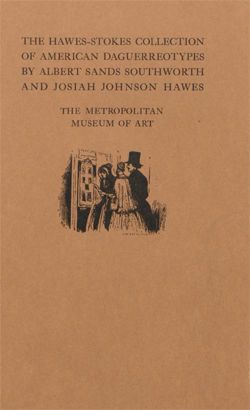[Students from the Emerson School for Girls]
Photography Studio Southworth and Hawes American
Albert Sands Southworth American
Josiah Johnson Hawes American
Not on view
This first photographic process invented by Louis Daguerre (1787-1851) spread rapidly around the world after its presentation to the public in Paris in 1839. Exposed in a camera obscura and developed in mercury vapors, each highly polished silvered copper plate is a unique photograph that, viewed in proper light, exhibits extraordinary detail and three-dimensionality.
The Boston partnership of Southworth and Hawes produced the finest portrait daguerreotypes in America for leading political, intellectual, and artistic figures. While at first glance, this group portrait of twenty-five unidentified young women may appear to be a haphazard confluence of bodies, the composition is carefully orchestrated as a series of diagonals and pyramids, as in the truncated pyramid formed by the eighteen seated and standing figures on the right-hand side of the picture.
This image cannot be enlarged, viewed at full screen, or downloaded.
![[Students from the Emerson School for Girls], Southworth and Hawes (American, active 1843–1863), Daguerreotype](https://images.metmuseum.org/CRDImages/ph/web-additional/37.14.56.jpg)

